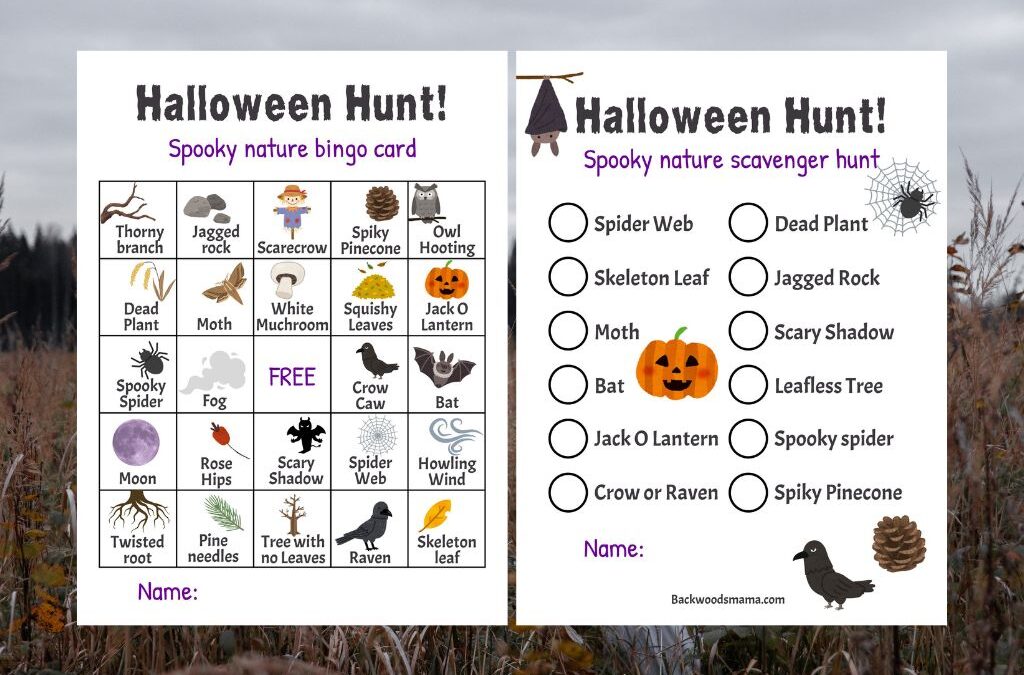×

Halloween Nature Scavenger Hunt & Bingo (Free Printables!)
Halloween is here, along with all the spooky, magical things happening in nature as fall deepens. Spiders creep into cozy corners, webs glisten...

The following is a guest post by the lovely, adventure seeker Natalie Vogt, who also happens to be my sister. Below she describes her recent adventure adventure at Kakwa Provincial Park and shares a plethora of beautiful scenic pictures. Because Natalie has so many wonderful pictures to share I have divided her trip into two parts. Below is the first part. To read the second part: click here.
In 2014, my father and I first visited Kakwa Provincal Park along with my husband and father-in-law who had visited many times. The trip was exhilarating.We scaled and explored the breath-taking peaks of Mt. Ruth and Ian Monroe. The surrounding scenery was beautiful, like candy to our eyes. At the end, we vowed to return to the park to discover more of its wonders, and this now takes us to the trip of 2015.
This year my father-in-law and I set out on a nine-day trip to the park, from July 26 to August 3. Two of the nine days we travelled into and out of the park. While there we had one rest day, a big five-day hike to Edgegrain Lake, and a day hike to Mt. Kendra.
July 26 – Travelling into Kakwa Lake
We woke up at 6:30 am for a long drive toward McBride on Hwy 16 and then 80 km along the Walker Creek Forestry Rd. We parked the truck just before the Bastille Creek Bridge and prepared our bikes. From here on, we biked 7.5 hrs to Kakwa Lake along an old mining road and challenging ATV trails. Rain made the ATV trails really muddy, which resulted in us pushing our bikes for a good 3 km through muddy ruts and holes. Now, before the trip my father-in-law and I were dreading the infamous Bucanan Creek crossing. The main obstacle to this crossing is the freezing cold water that reduces your lower extremities to numb stumps within seconds. The day before the trip, the idea to use Gortex socks suddenly came to mind. Both my father-in- law and I purchased socks and…they where worth every penny! The socks made the crossing comfortable and hence quick. After we got bikes and all across, we took a picture of myself in the creek to show how willing we where to go back into the water. No way that would be the case without the socks.
July 27 – Rest Day at Kakwa Lake
For our rest day, I helped the hosts with small tasks around camp, such as painting a new park kiosk and moving timber. The hosts were a lovely couple from Vancouver with a great passion for nature. They planned on joining us on our trip to Edgegrain Lake.
July 28 – August 1: Edgegrain Lake Trip
Together with the camp hosts, we left Kakwa Lake and traveled to Flat Top on our first day. We started along the old mining road back toward Muriel Lake. Once we left the mining road, we had a steep 2 km climb in the forest until we entered into the alpine. I love the alpine and its delicate flowers. The flowers are all so eager to show their beautiful dresses in a variety of yellows, whites, blues, purples, and reds. I am always awestruck. The pink and white mountain-heathers are some of my favourite flowers.
Unfortunately, this day we experienced the worst weather with low clouds, strong wind and cool rain. We managed to set up our tents during a brief break in the rain. Because of the low clouds many of the peaks were not visible, including Sir Alexander (3270 m). Strong gusts and rain continued throughout the night.
After a long 12 km day including a big mountain pass, we got to our campsite at Edgegrain Lake late around 9:00 pm (it was definitely getting dark). We believe the camp was an old horse campsite. Along the way we also stumbled upon a bunch of willow ptarmigan by the lake. The park hosts were birders and were really excited, as was I.
The next day we awoke to a beautiful blue morning at Edgegrain Lake. From the lake you can see Mt. Dix Lacs, Dorsal, Edgegrain, Kitchi, Ida, and St. Patrick. You can also see the quite impressive pass we climbed down from. I believe Mt. Edgegrain gets its name from the perpendicular rock bedding.
0 Comments